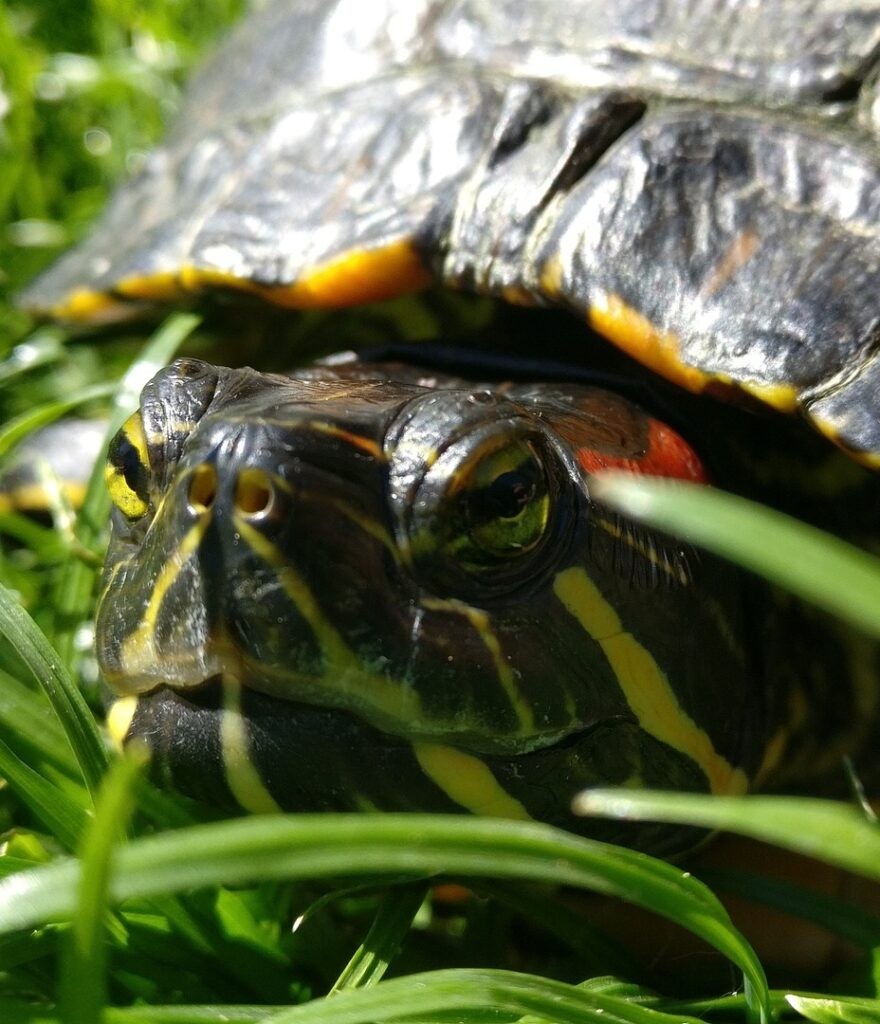If you’re a turtle enthusiast planning a vacation or concerned about a turtle that isn’t eating, you’ve likely wondered: How Long Can Turtles Live Without Food? The answer isn’t simple and depends on several factors, including the turtle’s species, age, health, and environmental conditions. This guide will explore these factors in detail, focusing primarily on red-eared sliders but offering insights applicable to other turtle species as well.
Understanding Turtle Dietary Needs
Before diving into how long turtles can survive without food, let’s understand what they typically eat. A balanced diet is crucial for their health and well-being. While many believe red-eared sliders are strictly carnivorous, they are actually omnivores, especially as they mature.
Wild red-eared sliders have diverse diets that vary based on location and availability. Their diet includes terrestrial foods such as leaves, fruits, insects, and carrion, as well as aquatic foods like algae, small amphibians, and mollusks. Captive turtles thrive on a mix of vegetables, insects, and commercial turtle food. Offering a varied diet keeps them healthy and stimulated.
 Close-up of red-eared slider turtle face showing detailed facial features
Close-up of red-eared slider turtle face showing detailed facial features
Survival Without Food: Key Considerations
So, how long can a turtle really go without eating? For a healthy, active adult red-eared slider in optimal conditions with clean water, the answer is: surprisingly long.
Generally, a healthy adult turtle can survive for a few weeks without food. Their resilience allows them to endure short periods of famine. Leaving a turtle unattended for a weekend or even up to two weeks isn’t usually a problem if the turtle is otherwise healthy. However, prolonged starvation can lead to malnutrition and a weakened immune system. It’s best to avoid extended periods without food whenever possible.
Tip: If you’re concerned about your turtle while you’re away, consider using automatic feeders or adding aquatic plants like Elodea to their habitat for them to graze on.
Factors Influencing Food Requirements
Several factors influence how long a turtle can safely go without food:
Age
Age plays a significant role in a turtle’s food requirements:
- Juveniles: Growing turtles need more frequent feeding, sometimes daily, to support their development. Allowing them to go hungry for extended periods can be detrimental.
- Adults: Adult turtles have slower growth rates and require less frequent feeding. Feeding every 2-3 days is adequate, and they can typically withstand up to two weeks without food.
Season
The time of year affects a turtle’s metabolism and appetite:
- Warm Months: During warmer periods, turtles are more active and require regular feeding. Stick to the 2-week guideline, especially for active turtles. This applies to indoor turtles in temperature-controlled environments.
- Cold Months/Brumation: As temperatures drop, turtles may enter brumation, a state of dormancy similar to hibernation. During brumation, they become less active and may not eat for months. If your turtle is brumating, there’s no need to worry about feeding them during this period.
Health
A turtle’s overall health significantly impacts its ability to withstand periods without food:
- Healthy Turtles: Healthy turtles can generally adhere to the standard guidelines, considering age and season.
- Sick or Recovering Turtles: Turtles that are ill, recovering from an injury, or newly rescued should not be deprived of food. Consistent feeding is crucial for their recovery and well-being.
Addressing a Loss of Appetite
If your turtle stops eating despite being offered food, it’s essential to investigate the possible causes.
A sudden change in environment or a stressful situation can cause a turtle to lose its appetite temporarily. Ensure the turtle has access to clean, warm water, proper UVB lighting, and a variety of nutritious food options. If the turtle was previously eating normally but now refuses food, and you’ve ruled out stress and brumation, consult a reptile veterinarian to check for underlying health issues.
Tip: Signs of a malnourished turtle include lethargy, sunken eyes, prominent bones, a faded shell, and difficulty swimming. If you observe these symptoms, seek veterinary care immediately.
Conclusion: Balancing Care and Planning
In summary, how long turtles can live without food depends on various factors. A healthy adult turtle can generally survive for a couple of weeks without food. However, age, temperature, and health status all play significant roles.
With proper planning, you can travel without worrying excessively about your turtle’s well-being. However, it’s crucial to arrange for someone to check on your turtle every few days to ensure their water is clean, the filter is functioning correctly, and the turtle is generally healthy.